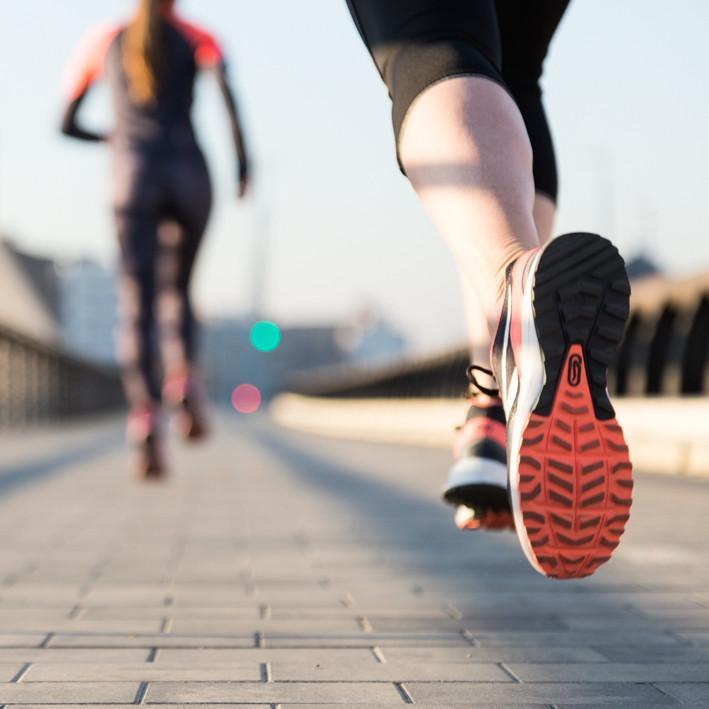Sports Injury Sleep Advice

So you’ve got up early and ventured to the gym, only to leave in an abundance of pain. Sore sporting injuries not only ruin that satisfied feeling you get after an intense workout, but also your quality of sleep for quite a while after. Although we are repeatedly told that plenty of rest is the answer to any aches and pains, a good night’s sleep can be the hardest thing to achieve with tender joints.
However, the sleeping position you opt for overnight can in fact relieve this, so it’s important to choose postures which won’t aggravate your injuries further. Here, we look at the best sleeping positions for the most common sporting injuries, including pain in the legs, arms and neck, to help you get back in shape in no time!
Leg Injuries
When it comes to pain in your legs, the ankles and knees are the most commonly affected areas for sporting injuries. With ankle ailments, such as a standard ankle sprain, the best sleeping position to relieve pain is to lie on your back and avoid placing any pressure on the ankle. Healthguidance.org recommends elevating the ankle slightly to drain fluids and prevent unnecessary swelling, so place a pillow or some blankets under the offending ankle while you sleep. Also apply some ice before going to bed to reduce inflammation.
For hamstring injuries, which affect the back of the thigh, it’s best to sleep with the knee extended, not bent. As chiropractor Ron Rogers states ‘sleeping with the injured part in a position that elongates the healing muscle will minimize the tendency for scar tissue to rob the muscle of flexibility.’ In general, it’s also helpful to rest the hamstring in an elevated position and apply an ice pack every now and then. Wearing an elastic compression bandage is also suggested to limit bleeding and swelling in the tissues.
If your sporting injury comes in the form of shin splints, physical trainer Jim Frith recommends sleeping on your back, with legs stretched out and toes pointing towards you to keep calves lengthened. This position is also useful for those suffering from Plantar Fasciitis or painful heels.
In terms of knee injuries, if you’ve torn your Anterior Cruciate Ligament, you may decide to have surgery depending on its severity. When sleeping, either before or after surgery, it’s helpful to raise your leg as much as possible and put pillows underneath your heel. Other knee pain, for example Runner’s Knee (Patellofemoral Pain Syndrome) which is pain due to the back of the kneecap rubbing on the thigh bone, sleep without bent knees to relieve pain. Again, try placing a pillow under your knees while you sleep. If you opt for side sleeping instead of sleeping on your back, place a pillow between the knees for extra comfort.
Arm Injuries
With arm injuries, especially the common Tennis Elbow, it seems pretty obvious that you shouldn’t sleep on the arm in pain. Tennis Elbow is caused from repetitive arm movement, so it’s important to keep the arm relaxed and loose, any pressure on the arm will reduce blood flow which is important for the recovery process. It’s recommended to sleep on your back, without bending the elbow if possible. Dr Barbara Bergin suggests wearing an arm brace to bed to eliminate the strain on the elbow.
For any shoulder pain, pillows can again come in handy to help you get a good night’s rest. Side sleepers should lay on their unaffected arm and use pillows to prop the suffering shoulder in a comfortable position. It’s also suggested that back sleepers should prop the arm in a comfortable position, again using pillows. It might be best to form some sort of barrier with the pillows to prevent you rolling over and landing on the affected shoulder.
Neck Injuries
Generally speaking, to avoid any neck pain, it’s important to not go overboard on pillows which might angle your neck unnaturally, a basic guideline is to ensure your head is in line with your body at all times. So it’s best to sleep on a low and firm pillow. In terms of sleeping position, sleeping on your back is the best for neck pain, shortly followed by sleeping on your side. Sleeping on your front is not recommended as again it bends your neck unnaturally.
